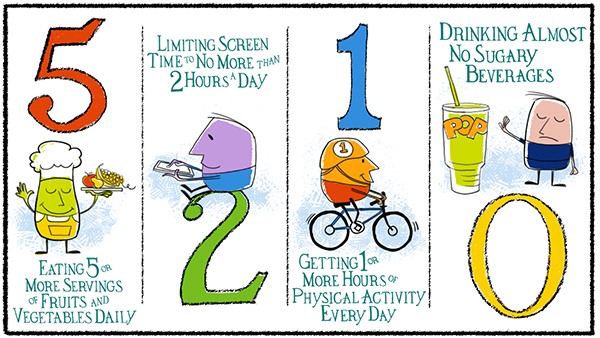 Many things are running through a parent’s mind this time of year. Back-to-school chaos and excitement are beginning, but a simple checklist can keep everyone on track and set the tone for the year — for parents and kids alike.
Many things are running through a parent’s mind this time of year. Back-to-school chaos and excitement are beginning, but a simple checklist can keep everyone on track and set the tone for the year — for parents and kids alike.
Dr. Jennifer Dwyer, a pediatrician at Akron Children’s Pediatrics, Barberton, shares 7 tips to help families prepare for a healthy, safe and happy start to the school year. Don’t worry, there’s still time to get them checked off your To-Do list.
1. Review your children’s immunization schedules to be sure they have received recommended shots to protect their health.
In addition, the U.S. Centers for Disease Control and Prevention recommend children 6 months and older get an annual flu vaccine and receive recommended COVID-19 vaccines.
“Vaccines are a key component of preventive medicine,” said Dr. Dwyer. “You’re giving your child protection from diseases that otherwise might bring pain, permanent damage or even death.”
2. Establish a bedtime routine and sleep schedule. It can take up to 5 days for kids to reset their internal clocks after a summer of staying up late. Children of all ages need sound, uninterrupted sleep to grow, develop and function properly. Sleep guidelines are:
- Toddler: 12-15 hours, including naps
- Elementary-school age: 12-13 hours
- Middle-school age: 10-11 hours
- Teenage: 9 hours
3. Talk about nutrition and remind kids to make good food choices when going to the vending machine, through the cafeteria line or packing a lunch.
“Breakfast is always an important meal and start to the day,” Dr. Dwyer said. “Kids are more alert and do better in school if they eat a good breakfast every day. Protein and carbohydrates are key.”
Guidelines in the 5-2-1-Almost None formula, recommended by dietitians, have been shown to help kids and adults prevent obesity, maintain a healthy weight and improve their overall well-being.
4. Get organized early so everyone knows what is expected of them and when. This includes extracurriculars and class schedules, as well as homework, bedtime and morning-time routines.
“Be sure to schedule ‘free time’ and family time, too,” Dr. Dwyer said. “Kids need time to relax and be creative, as well.”
5. Review the after-school plan and age-appropriate rules if your kids are staying home alone. This may include what time they and you will get home; what to do in an emergency; and specify who, if anyone at all, is allowed in your home when you’re not there.
6. Know how a bully acts and how to respond confidently to the threats.
One in 4 public schools reports that bullying among kids occurs on a daily or weekly basis, and 1 in 5 high school students report being bullied in the past year. Learn the signs and what to do, including cyberbullying, as well as how to bully-proof your child.
7. Dr. Dwyer advises parents of children who have a medical issue, allergies or are on medication to talk to the school nurse and teachers about it and how it needs to be managed during the school day.
You should also talk to teachers about other special recommendations in the classroom that would help your child succeed. For example, kids with attention deficit hyperactivity disorder (ADHD) should be seated in the front of the room, and a child with vision problems should sit near the board.
Start the year off right with this back-to-school checklist and help ensure your children have a healthy, safe and successful school year.
For more information or tips on back to school, contact your child’s pediatrician. Virtual Visits are available.











